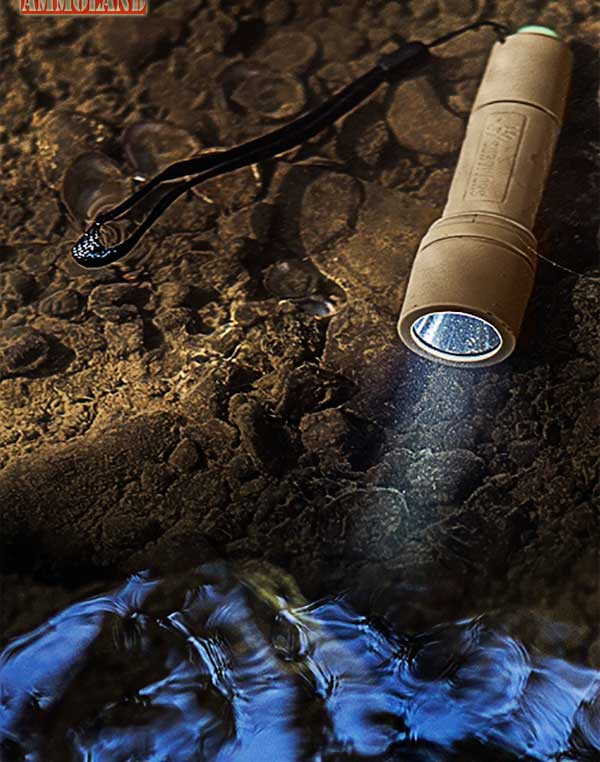By Michael Sutter
Michael Sutter reviews the 150 Lumen 12 Survivors GeoSpark Flashlight. It is cheap but how does it compare to flash lights twice its price?


USA – -(Ammoland.com)- Whether you’re camping, hunting or road-tripping, no adventure is successful without the right gear.
Considered a staple item when it comes to preparedness, the reasons for keeping a reliable flashlight on hand are many; of course, finding the right light to suite your household and off-the-grid needs can be tricky. Today’s technology is ripe with manufacturing and compliance standards required before product ever hits the shelves. Inevitably, the process helps pare down quality options consumers can trust. One of those flashlight options is the 12 Survivors GeoSpark Flashlight.
12 Survivors GeoSpark Flashlight

Constructed of a rugged yet lightweight glass-filled nylon composite, the GeoSpark is more than just shockproof, it’s dustproof and IP67 waterproof rated (submersible to one meter for up to 30 minutes). While reliability in nearly any environment is great, it needs to deliver the illumination goods, too. The GeoSpark does just that. For an inexpensive, compact flashlight, I was pleasantly surprised by the presence of a high-intensity Cree XPE R3 bulb pushing 150 lumens on high and exceptionally well-focused throw.
During testing I stumbled on a great feature. The GeoSpark packs its 150 lumen punch for 1.5 hours then automatically decreases brightness to 20 lumens to extend battery life. At 20 lumens the GeoSpark can light the way for up to 10 hours.
Speaking of batteries, the GeoSpark is powered by a single AA battery. In my personal experiences, the smartest choices for great performing LED flashlights have been those powered by standard batteries like AA. While some great flashlights run on CR123 batteries, which have higher voltage and often illuminate brighter, such batteries are sometimes expensive and harder to come by, especially when camping in more remote areas; sometimes it seems next to impossible to find special battery replacements.
The 12 Survivors GeoSpark Flashlight has another great feature, the click on-off tail cap. The click-style button features two-stage operation and glows in the dark! Sure, it makes the button easier to identify in low light but it also makes the GeoSpark seriously easy to find in the dark. The button’s two-stage operation is perfect for one-handed operation; pushing the button cycles modes through high, low and S.O.S. There is a two stage on/off push button that glows in the dark and since this light is designed for one-handed functionality, it changes between high, low and S.O.S. with ease.

When it comes additional features, as simple as it seems, one of my favorites is the lanyard! All too often, manufacturers skimp on this practical accessory. As examples, my Surefire 6P and G2 do not have lanyards.
The ability to quickly tether a flashlight to my wrist, freeing my hand up for other tasks without dropping the flashlight, is more than functional or convenient, it’s downright nice.
While the 12 Survivors GeoSpark Flashlight boasts some great features, it’s also nothing fancy. Threadbare on luxuries, as a flashlight should be, the GeoSpark is nothing more than a well-designed yet simple flashlight, promising lots of bang for your buck and perfectly suited for emergency kits as well as weekend-warrior adventures. In my testing, the single-handed operations were useful in an array of situations and I believe its durable construction promises quite a respectable lifespan, considering a MSRP of only $35.99.
Admittedly, I own several flashlights at double the cost with less features. If you’re interested in learning more about the 12 Survivors GeoSpark Flashlight, visit www.12Survivors.com.

